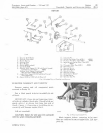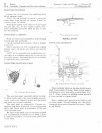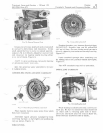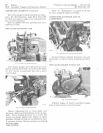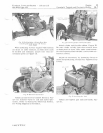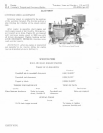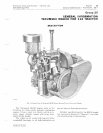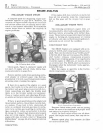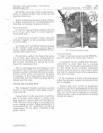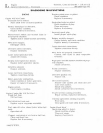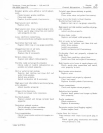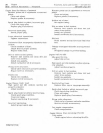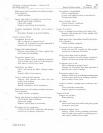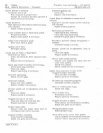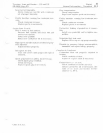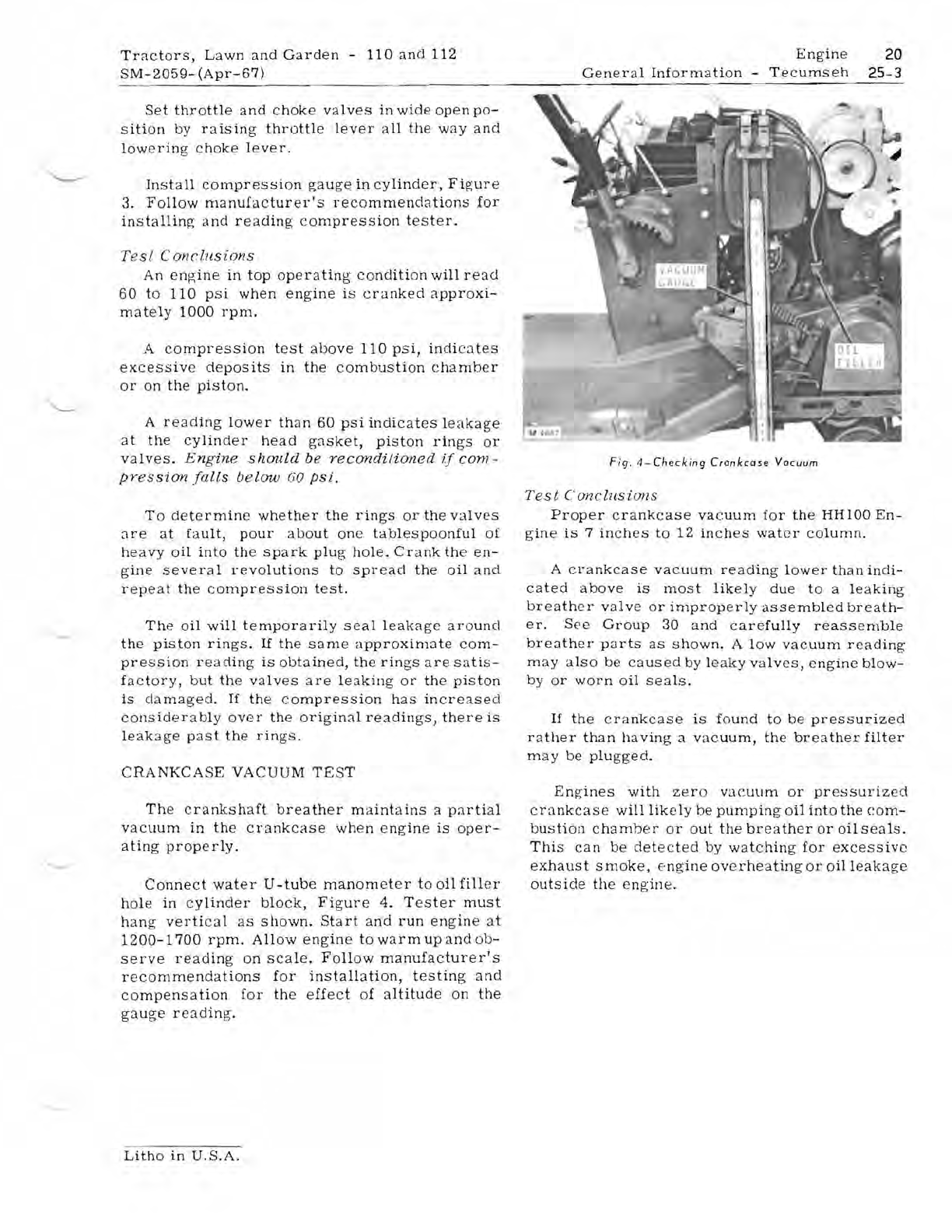
Tractors,
Lawn
and
Garden
-
110
and
112
SM-
2059-
(Apr-67)
Set
throttle
and
choke
valves
in
wide
open
po-
sition
by
raising
throttle
lever
all
the
way
and
lowering
choke
lever.
Install
compression
gaug~
in
cylinder,
Figure
3.
Follow
manufacturer's
recommendations
for
installing
and
reading
compression
tester.
Test
Conclusions
An
engine
in
top
operating
condition
will
read
60
to
110
psi
when
engine
is
cranked
approxi-
mately
1000
rpm.
A
compression
test
above
110
psi,
indic3tes
excessive
deposits
in
the
combustion
chamber
or
on
the
piston.
A
reading
lower
than
60
psi
indicates
leakage
a t
the
cylinder
head
gasket,
piston
rings
or
valves.
Engine
should
be
reconditioned
if
com-
pression
falls
below
60
psi.
To
determine
whether
the
rings
or
the
valves
are
at
fault,
pour
about
one
tablespoonful
of
heavy
oil
into
the
spark
plug
hole.
Crank
the
en-
gine
several
revolutions
to
spread
the
oil
and
repeat
the
compression
test.
The
oil
will
temporarily
seal
leakage
around
the
piston
rings.
If
the
same
approxim3te
com-
pression
reading
is
obtained,
the
rings
are
satis-
factory,
but
the
valves
are
leaking
or
the
piston
is
damaged.
If
the
compression
has
increased
considerably
over
the
original
readings,
there
is
leakage
past
the
rings.
CRANKCASE
VACUUM
TEST
The
crankshaft
breather
maintains
a
partial
vacuum
in
the
crankcase
when
engine
is
oper-
ating
properly.
Connect
water
U
-tube
manometer
to
oil
filler
hole
in
cylinder
block,
Figure
4.
Tester
must
hang
vertical
as
shown.
Start
and
run
engine
at
1200-1700
rpm.
Allow
engine
to
warm
up
and
ob-
serve
reading
on
scale.
Follow
manufacturer's
recommendations
for
installation,
testing
and
compensation
for
the
effect
of
altitude
on
the
gauge
reading.
Engine
20
General
Information
-
Tecumseh
25-3
Fig.
-I-Checking
Crankcase
Vacuum
Test
Conclusions
Proper
crankcase
vacuum
for
the
HH
100
En-
gine
is
7
inches
to
12
inches
water
column.
A
crankcase
vacuum
reading
lower
than
indi-
cated
above
is
most
likely
due
to
a
leaking
breather
valve
or
improperly
assembled
breath-
er.
See
Group
30
and
carefully
reassemble
breather
parts
as
shown.
A
low
vacuum
reading
may
also
be
caused
by
leaky
valves,
engine
blow-
by
or
worn
oil
seals.
If
the
crankcase
is
found
to
be
pressurized
rather
than
having
a
vacuum,
the
breather
filter
may
be
plugged.
Engines
with
zero
vacuum
or
pressurized
crankcase
will
likely
be
pumping
oil
into
the
com-
bustion
chamber
or
out
the
breather
or
oil
seals.
This
can
be
detected
by
watching
for
excessive
exhaust
smoke,
engine
overheating
or
oil
leakage
outside
the
engine.
Litho
in
U.S.A.



